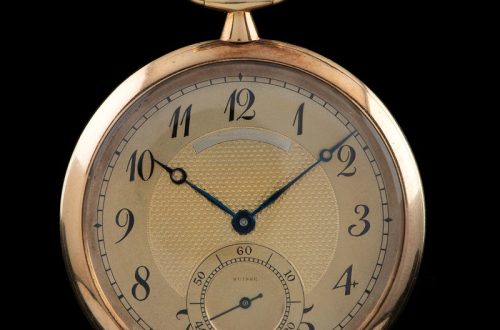A timeless symbol of craftsmanship and precision, the mechanical watch has captivated us for centuries. Beneath the elegance of their design lies a world of intricate mechanics, a miniature symphony of coordinated motion. Today, we embark on a journey to unveil the inner workings of a mechanical watch, exploring the two key components that orchestrate this symphony of timekeeping: the power source and the regulating mechanism.

Part 1: The Powerhouse – Mainspring and Barrel
Mainspring:
The mainspring, a vital element within a mechanical watch, serves as the foundational source of energy that drives its entire mechanism. Composed of a tightly coiled ribbon of steel, this unassuming yet crucial component is responsible for storing the potential energy fundamental to the watch’s operation. When the mainspring is manually wound, it accumulates tension, steadily building potential energy within its coiled structure. This stored energy serves as the driving force powering the intricate mechanism of the timepiece. As the mainspring is wound, it eagerly anticipates the moment of release, poised to unwind and release its accumulated energy. This transfer of energy sets into motion a precise and coordinated sequence of movements within the gear train and escapement, ultimately propelling the various timekeeping functions of the watch. Hence, the mainspring’s ability to store, build, and release energy is paramount to the smooth and regulated operation of a mechanical watch.
Barrel:
The barrel, an integral component of a mechanical watch, plays a crucial role in housing and regulating the mainspring. Shaped like a drum, it serves a dual purpose in the timepiece’s mechanism. Firstly, it provides a secure enclosure for the mainspring, ensuring it is contained and protected within the watch’s interior. Secondly, the barrel acts as a regulator, controlling the release of the energy stored in the mainspring at a controlled and consistent rate. The precise management of this energy release is vital in maintaining the accuracy and reliability of the watch’s timekeeping functions.

Additionally, the barrel is intricately connected to the gear train, serving as the next vital link in the chain of power transmission within the watch movement. Through this connection, the unwinding energy from the mainspring is transmitted to the gear train, propelling the synchronized movements of the various timekeeping components, thereby ensuring the smooth and accurate operation of the mechanical timepiece. Thus, the barrel’s multifaceted role underscores its significance in the intricate workings of a mechanical watch.
Part 2: The Conductor – Gear Train and Escapement
Gear Train:
The gear train acts as the transmission system of the watch, transferring the unwinding energy of the mainspring throughout the movement. Composed of a series of interlocking gears of varying sizes, the gear train efficiently translates the high torque, low-speed output of the barrel into the lower torque, high-speed rotation required by the hands.
Escapement:
The escapement is the maestro of the mechanical watch, the intricate mechanism that governs its precision. It acts as a gatekeeper, releasing the controlled flow of energy from the mainspring in tiny increments. This regulated release allows the watch hands to advance in precise, uniform steps, keeping accurate time. The escapement typically consists of a balance wheel and an escapement wheel that work in perfect harmony.

Part 3: Keeping Time – The Balance Wheel and Hairspring
Balance Wheel:
The balance wheel is undeniably the pivotal centerpiece of a mechanical watch’s regulating mechanism. This small, intricately weighted wheel oscillates to and fro at a steadfast, consistent frequency, effectively serving as a kind of metronome for the watch. What makes the balance wheel quintessential to the watch’s precision lies in its inertia. This inertia embodies a remarkable resistance to changes in motion. It plays a pivotal role in maintaining and safeguarding the watch’s consistent oscillatory pattern. The balance wheel’s inertia is paramount in ensuring that the watch’s timekeeping remains steadfast and precise. It remains unfaltering in its accuracy. Ultimately, it is this steadfast oscillation, impelled and controlled by the balance wheel’s inertia. This lies at the very heart of the mechanical watch’s ability to tell time with unwavering accuracy. It underscores the importance and mastery of this intricate and essential component within the watch’s complex mechanism.
Hairspring:
Attached to the balance wheel is the hairspring, a delicate spiral spring crafted from a special alloy. The hairspring exerts a counterbalancing force on the balance wheel, governing the speed of its oscillations. By adjusting the hairspring’s tension, watchmakers can fine-tune the frequency of the balance wheel, thereby regulating the watch’s overall timekeeping accuracy.

Part 4: Additional Features – Complications and Power Source
Complications:
In the world of mechanical watches, beyond the fundamental function of timekeeping, some movements boast additional features known as complications. These complications add layers of complexity and functionality to the watch, enhancing its allure and practicality. Complications come in a wide variety, ranging from simple date displays and power reserve indicators to more intricate functions such as moon phase displays and perpetual calendars. These added features not only elevate the practicality of the timepiece but also contribute to its aesthetic appeal and desirability. The inclusion of complications in a mechanical watch represents the pinnacle of watchmaking craftsmanship, showcasing a mastery of intricate mechanics and engineering. The presence of these features underscores the artistry and technical expertise involved in creating a mechanical watch, transforming it into a captivating and multifunctional timepiece that goes beyond mere timekeeping.
Power Source:
Mechanical watches come in two main varieties: manual-wind and automatic. Manual-wind watches require periodic winding by hand to replenish the mainspring’s energy. Automatic watches, on the other hand, harness the wearer’s movements to automatically wind the mainspring through a rotor mechanism, offering a more convenient option for everyday wear.

In conclusion, the intricate mechanics of a mechanical watch are a marvel of engineering ingenuity. From the power harnessed by the mainspring to the precise regulation of the escapement and balance wheel, each component plays a vital role in the symphony of timekeeping. Whether a simple time-only piece or a complex masterpiece with intricate complications, a mechanical watch represents a fusion of art, science, and human craftsmanship, a testament to our enduring fascination with precision and the relentless march of time.





